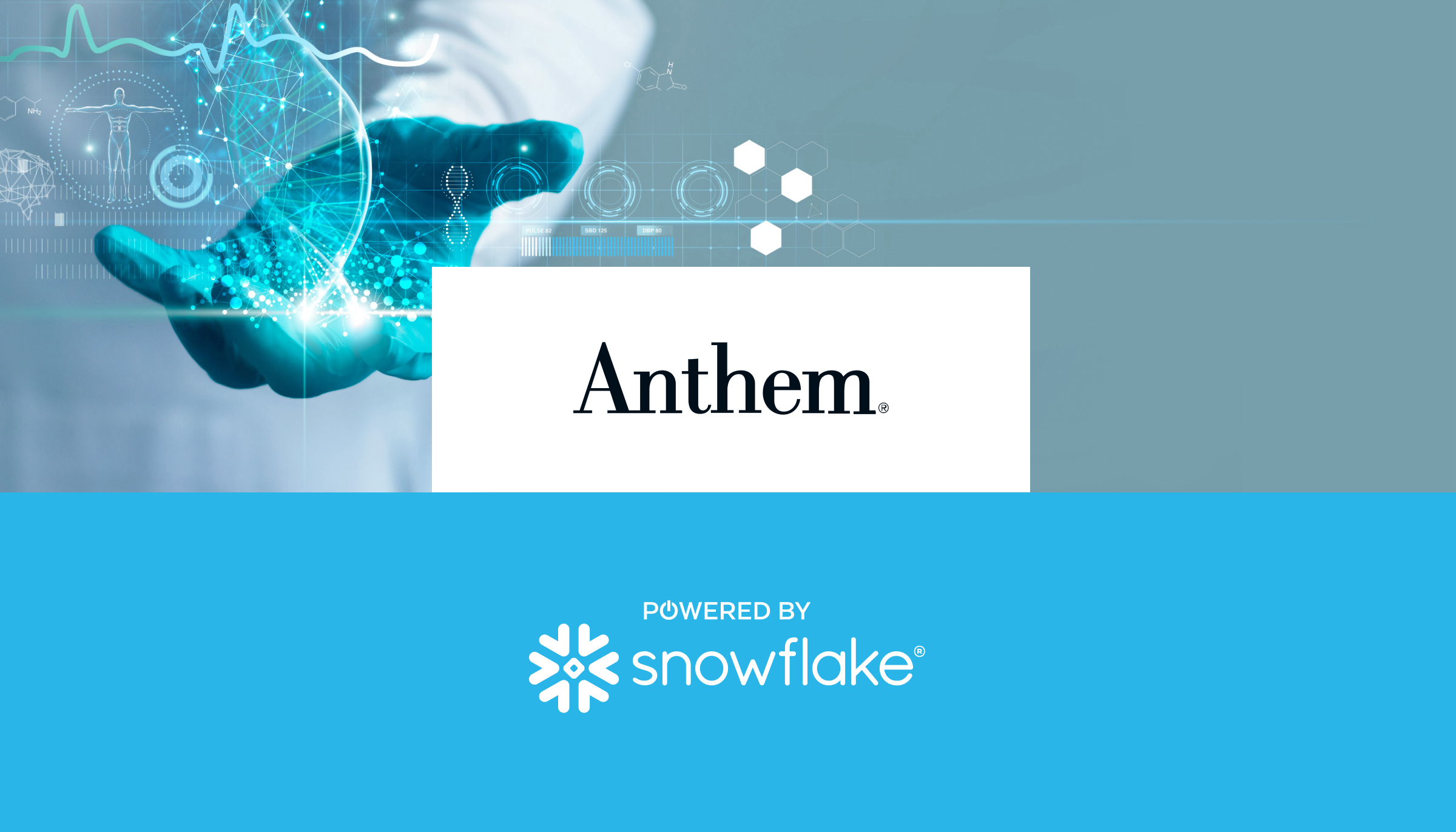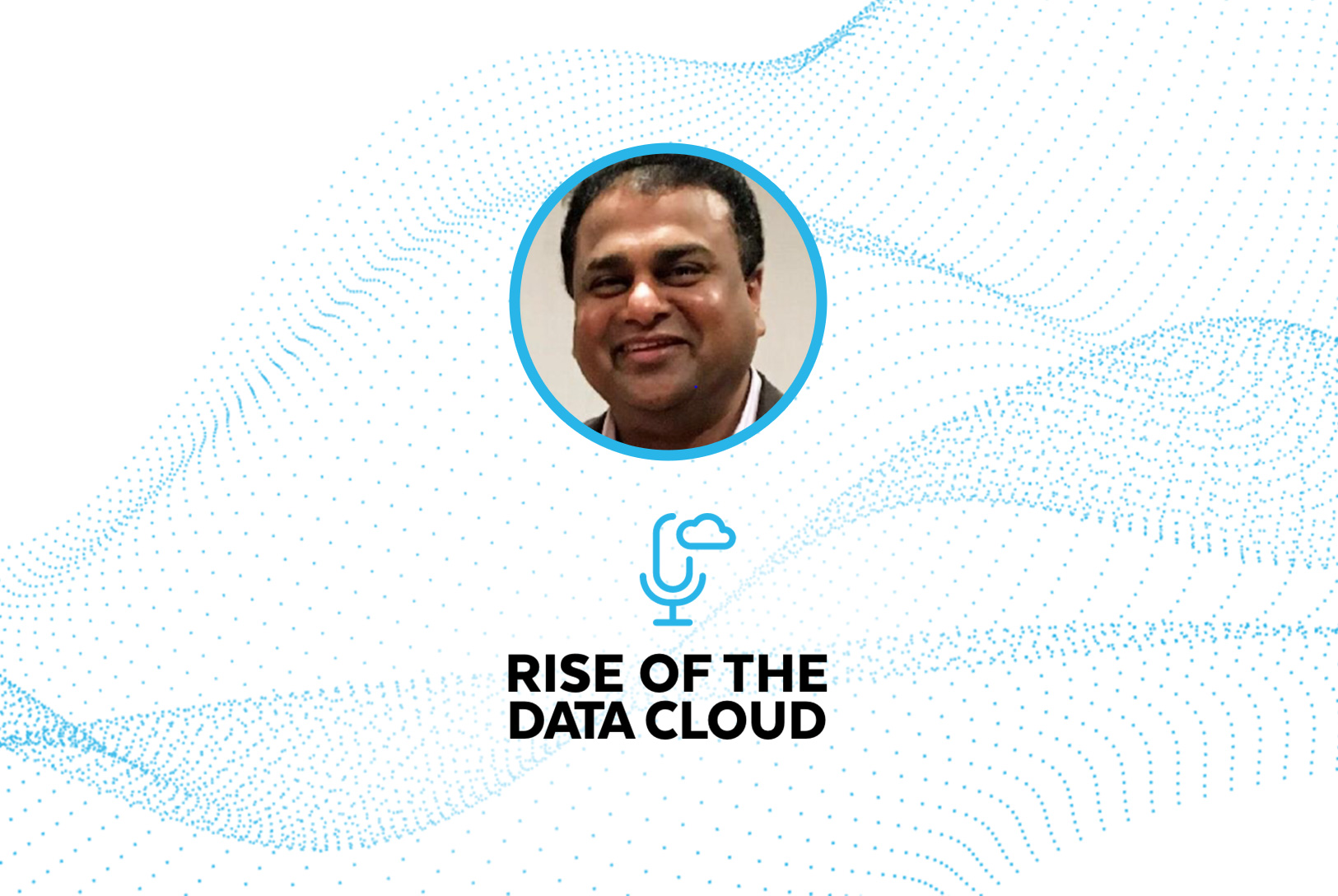A Q&A with Ashok Chennuru, Chief Data & Insights Officer at Anthem
Editor’s Note: Ashok recently presented at a Snowflake webinar. Below are the highlights of the conversation (edited here for the blog format).
Anthem, Inc., is a provider of health insurance in the United States. It is the largest not-for-profit managed healthcare company in the Blue Cross Blue Shield Association.
Moderator: Welcome, Ashok. Let’s start with you giving us a brief level set of what drove Anthem to adopt the Snowflake Healthcare and Life Sciences Data Cloud and your role at Anthem.
Chennuru: So, a bit about Anthem; we serve 118 million members. Our data serves more than 200 million people throughout our broad and diverse ecosystem. We like to say that data is the heartbeat of that ecosystem. We touch almost a third of the U.S. population, so it’s paramount that we strive to deliver the highest value and most holistic view possible of every patient to physicians and physician partners. Snowflake has made possible a holistic, whole-person view and is helping us to drive value-based care. I’ve been at Anthem for 15 years. My whole family on both my and my wife’s side are mostly physicians, and I found my niche in the tech side of managing data in healthcare.
Q: Can you say more about what you mean by holistic?
Chennuru: Yes. First, let’s just note that the pandemic has affected a great shift in modalities of care, one that clearly has long-term ramifications. In-person care is still in play but there are now multiple modalities of care delivery. And we’re getting more data, much of it unstructured, from more places than ever. We have emerging data sets like genomics in the home health space. We need to find ways to help people find the right physician or provider—and being able to get some care virtually changes the search parameters.
And we are bringing in more data from the entire patient care lifecycle, such as what happens when they leave the hospital. Do they have transportation? Do they have access to nutritious food? Do they live alone? We saw some big indicators emerging like the common threads among people who were getting readmitted within a few days of discharge. We can now better understand their community and the support structure around them from a larger population standpoint. This is enabling us to focus on improving their quality of care. Because when you look at the whole person, if somebody has diabetes, if you just treat them clinically and don’t understand, say, where they live, or their access to nutritious food, that may impact outcomes. So one metric we derived was, in 2020, we saw that 58 million Americans had challenges accessing nutritious food, including 18 million children, up 46% in a short time, and we found this is a leading indicator for whether people got better. Other factors like living alone and having transportation are also important—we are getting better insight into the whole person.
Q: How is Snowflake helping?
Chennuru: Speed, for one thing. With Snowflake we are getting data insights in minutes versus days. We see huge benefit in moving from on-premises to a cloud-native platform, helping us to realize our strategy of a multi-tenant data foundation. What does that mean? It means that our data foundation will have Anthem data but also have the right security so we can create a platform for others to share the data, which drives even deeper insights. We also want to make sure we have good, clean data from providers so we can enable population health management. We can enable high quality, low cost to our consumers and even make sure that we can identify fraud, waste, and abuse more on a proactive basis. And we are able to complement Anthem data with EMR data sets we get from places like the physician’s lab, admin discharge data, clinical data, and community-based data.
Q: Great. Please say more about working with all those data sets?
Chennuru: Well, the question becomes, How do we aggregate all that data? Some of the emerging data sets like behavioral health data, genomic data sets, home health, remote patient monitoring device data—all these have exploded. And there are a lot of net new data sets that are emerging. How do we aggregate it? And how do we make it actionable? All of this comes together in what we call a whole person health profile. We use this to drive our physicians to value-based care. So instead of paying them a fee for service or volume, we pay them based on outcomes and value and that’s very much driven through data and analytics.
Q: What are some of the benefits Snowflake brings to the table?
Chennuru: In addition to the obvious benefits of the cloud—scalability, agility—the bigger opportunity with Snowflake is the ability to collaborate in our ecosystem and the sheer speed of insights, now in minutes versus days. We were spending a lot of time crunching data to turn it into insight; now we reduce that cycle time of turning our rich data into meaningful outcomes. And we can swiftly try different data models, so it’s way easier and faster to iterate. And we can more easily collaborate with our ecosystem. With Snowflake in our system we can deal with terabytes of data coming in and out and get access to a wider data set. We are, simply put, learning more from our data. That’s the model Snowflake has enabled, helping us to implement products that drive business outcomes in a quarter whereas it used to take a year.
Q: How is being able to work with new and diverse types of data helping to drive better decisions?
Chennuru: Well, for example, in the pandemic we were able to access immunization registries, state-administered sites, and lab data. Through the power of AI, we can analyze or have leading indicators to get at—what is the risk of hospitalization? If we had facilities that were severely constrained, we could reach out and assess the risk level in that community. This helped us advise our members and employers without feeling we were in the dark, supporting decisions like delaying care on elective surgeries or shifting to an outpatient model where it made sense. And with Snowflake, we were able to get this insight within a quarter. We could also create this actionable insight in our dashboards, and that helped us to educate state agencies, the federal government, or employers as well as consumers and physician partners. This had a big and meaningful impact.
Q: You mentioned sharing data across the ecosystem. Can you elaborate?
Chennuru: Historically, we have not had a lot of data or insight with patients that need to go outside our health system. A patient may have one primary care physician in our system, and go to an orthopedic surgeon outside the system, or see a specialist like a gastroenterologist. We have the opportunity to collect all that data and drive meaningful physician insights by being able to share back with the physician. And more physician partners are opening up and sharing their data too, which we can now take advantage of. It’s also important now to be able to share virtual health care and telehealth data across the ecosystem. This is especially important for patient-reported data, such as what’s gathered in home health. When we started to take in all our siloed data sets and put it all in the Snowflake Data Cloud, we could really see the correlation between social drivers, clinical factors, unstructured data, and how it all can tell a story when they are unlocked and correlated.
“We’re driving value-based care with Snowflake.”
Chief Data & Insights Officer at Anthem
Q: What have you found most valuable about Snowflake?
Chennuru: With Snowflake we focus less on moving data and more on turning that data into valuable insight. We love that Snowflake can scale and handle so many use cases and workloads with ease. The analytic abilities are robust enough for our complex data ecosystem—we serve 200 million members in our data ecosystem—and now we can standardize it all on one cloud-native platform. It’s not just about digital downloads anymore; with Snowflake, we are seeing data-driven discovery and analytics-based storytelling.
To listen to the entire webinar, click here.


